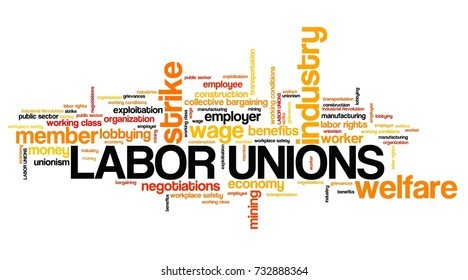A history of Labour Laws Part 1
What are Labour Unions?
Labour unions were created as a means of allowing industrial workers a collective bargaining power against their employers. For obvious reasons the industrialists and governments were not the biggest fan of these organizations. However, it was their intervention in the processes of employment that allowed workers to negotiate their minimum wages, limit work hours, and arrange for healthcare privileges and retirement benefits.

A history of Labour Unions
Labour unions came into existence in the late 18th century in certain primitive forms in Great Britain. They coincided with the changing nature of labour relations as influenced by the industrial revolution.
However, the way we know labour unions today came to exist across most of the western world after 1850s. The first countries to have functioning and successful labour unions were of course the leaders of the free world, Britain, and United States of America.
Britain
Throughout the early 19th century, there were many consistent attempts to establish official trade unions by passing laws in its favour through the parliament. The initial movements were dominated by skilled labourers, mostly engineers, whose aim was to establish a suffrage of manhood for the labourer community. Tracing the history of these sporadic but continuous attempts at legitimizing unionism can be traced throughout the landscape of Britain, and even in the disputed nationalities of Scotland and Ireland.
With the Trade Union Act of 1871 the legality of labour unions was finally established. In Britain, the politically motivated movement in favour of labourers and unions eventually led to the establishment of the official Labour Party in 1906. The internal changes that happened through the last years of the 19th century involved the slow association of the unskilled and semi skilled labourers into the official unionized movement. The elitism of skilled labourers was broken down due to the needs of the unions to find popular representation.
United States of America
Unlike Great Britain, the United States of America was late to the trade union movement. Various efforts to make national trade unions a reality had started in the 1870s-80, under the leadership of the Knights of Labour. However, due to poor organization, the movements soon fizzled out.
It was finally with the establishment of the AFL (American Federation of Labour) in 1886, led by Samuel Gomper until his death in 1924, that made the trade union movement a mainstay in national politics. It was a national coalition of multiple trade unions, and in 1907, with a leaning towards the Democratic party, the AFL became a major player in the American political scene.
Similar to the initial efforts at unionizing in Britain, the labour movement of USA was also dominated by the demands and membership of skilled workers. Disputes over including unskilled industrial workers under AFL’s affiliation led to the creation of the CIO (Congress of Industrial Organizations) in 1935. The AFL and CIO were however not separate for a very long time, as they merged in 1955 and are currently recognized as the joint organization, AFL-CIO.
1935 also saw the historic Wagner Act, sponsored by Democratic Senator Robert Wagner. It established the National Labour Relations Board (NLRB) which was given the power legitimise the functions and bargaining powers of labour unions, under appeal from employees and organizations.
India
India’s industrial development mirrors that of Britain in a few ways. However being a colony of the latter nation, the impact of industrialization on India was more acute.
Unionization came to India through the benevolence of social reformers in late 19th century, who were leading the national movement at that point of time. With the power having been transferred from the British East India Company to the British government, the reformers had high hopes about proper legislative processes being followed within the subcontinent.
The rise of labour movements happened in the textile industry as it was the densest employer of workers. In 1875 the Bombay mill workers were led on a strike by S.S Bengalee. This eventually led to the first Factories Act of 1881 being passed. The first union was consequently set up in the same presidency by M.N Lokhande, called the Bombay Mill Hands Association in 1891.
Inspite of these developments in the 19th century, the pan-Indian recognition of labour rights, and establishment of labour unions happened in early 20th century. During the First and Second World Wars, the dismal economic conditions led to the development of class consciousness and multiple Communist organizations.
The most important labour union formed in this period is the AITUC (All India Trade Union Congress) under Lala Lajpat Rai, set up in 1920. The Trade Unions Act of 1926 and the Trade Disputes Act of 1929 officialised the labour union movement, recognizing it in a parliamentary capacity.
Historical Context
In all the countries covered in the last section, we can see labour unions forming and reforming from the mid to late nineteenth century. That time period coincides with industrial society finding its footing, and people coming to terms with the demands of that world. Thus we can see Britain, where industrialization had found its first foothold being the first developers of labour safety laws, and labour unions.
With the spread of colonialism into India, we can see the impact of industrialization on our own nation, as labour unions are formed in different capacities by the upper class/caste social reformers in industrial cities like Bombay (Mumbai). However, unlike in Britain, the organized labour movement is not yet nationalized because of various reasons. Not the least of those is the huge expanse that India’s territory covers. Additionally, as explained in the last section, the movement in India was initially led by the educated class of India, and not by the labourers themselves. People like Smt Anusuyaben Sarabhai, and Lajpat Rai were the proponents of labour unions and movements, espousing a philosophy of socialism based not on direct experience, but on theoretical precedence. Thus there was a dissonance between the union movements and the people they represented.
USA’s history with labour unions is far more sporadic because it was also undergoing its own nation building exercises. With its independence in the late 18th century, USA was dealing with its slow federation formation. Then, in the mid 19th century USA had its bloody civil war, ostensibly about the abolition of slavery. Thus, the labour movement took a back seat to dealing with other social evils. As the movement slowly prospered in the last decades of the 19th century, it took a more pressure group approach to politics, as opposed to the Labour Party politics of Britain. It was perhaps a recognition of the two party structure of USA’s politics that led them to forego the formation of a separate political entity, instead existing as a part of the Democratic Party’s political agenda.
The 20th Century
We have stopped the exploration of labour union history at the juncture of the early 20th century in this article. This is because, the Russian Bolshevik Revolution in 1917 had a significant impact on the development of labour unions, movements, and laws. The boom of communism as an ideology around the world following the First World War was as much in the response to the economic fallout of the war, as it was in imitation of the October Revolution. We will explore that history in the next installment of this series.







